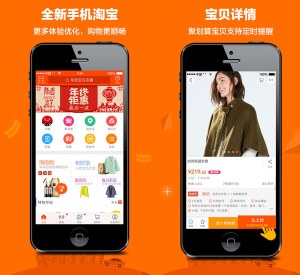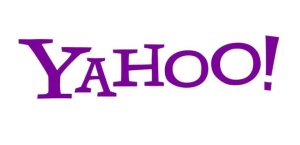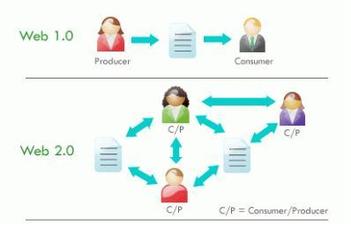On this week’s lecture, we learnt all about e-Business and e-Commerce. E-Commerce refers to the buying and selling of goods and services electronically (through any electronic means). On the other hand, e-Business specifies the use of the Internet to conduct these businesses.

According to this graph, we can see that China is a rising player in the e-Commerce scene. I am not surprised considering Alibaba Group, one of the largest and most successful group, originated from China.
Today, I am going to talk about a Chinese e-Commerce, Taobao. Being an avid shopper myself, I like to source out cheap yet fashionable clothings. (If not I might become broke at the age of 25!) Taobao is my shopping heaven because I can get in-trend clothes at a fraction of the price sold at branded stores such as Forever 21, Zara etc.
So what exactly is Taobao? Firstly, it is an e-Commerce that facilitates C2C (consumer-to-consumer) retail. Buyers put up online shops to sell their products to consumers who mainly originate from Chinese-speaking countries (China, Taiwan etc.) since their website operates with Mandarin as their communication medium.
This is how their website looks at first glance:

Overwhelming isn’t it? This was how I felt when I first used Taobao. In fact, the layout of the website as well as Chinese as the main language medium was what discouraged me from using Taobao for many years. I only started being receptive to Taobao after learning how to use it from my friend. This brings me to the topic of web design in e-Businesses/e-Commerce.
Web design is of utmost importance, especially for e-Businesses/e-Commerce. The webpage will be the first thing consumers encounter, therefore making a good first impression is essential in making customers stay.
So what can Taobao do to improve their web design?
1. Less is More
Take a look at Taobao’s main webpage that is shown above. It just screams CONTENT OVERLOAD to me. This can come off as overwhelming to consumers that visit the page for the first time. They wouldn’t know where to click to get to where they want. Instead of overpopulating the main webpage, Taobao should keep things simple. This can be done by placing only the basic/necessary links on the first page. These include:
- Simple navigational menus (5-10 navigational items)
- Sub-Categories under each navigational link
- Search bar
That’s all. Remember – simplicity is key!
2. Relevant and Clear images
Next, Taobao should use clear images that is relevant. As we can see in their page, some images do not correspond to the words they represent. For instance, a discount for Valentine’s day gifts is represented by a cat necklace. Although yes, the cat necklace may be part of the discounted items, it has no direct relevance to the idea of “Valentine’s Day discount”. This may confuse users, undermining the quality of their user experience.
Also, clear images are recommended because no one likes looking at pixellated or low quality ones. Businesses must understand that appealing to customers’ visual senses is very important in order to ensure good user experience.
3. Strategic Product Placement
The main page is the first thing that consumers see when they enter a website. Space is valuable on the main page, therefore it is essential to utilize it strategically. This can be done by placing top selling items on the front page and or inform consumers about new product launches. However, this should be done without overcrowding the main page. Thus, I suggest Taobao advertised their top sellers/new items through a big picture on the main page. Consumers can click next to view more photos, so we only have one photo showing at a time. (Prevents crowding of photos)
The web design should not be overlooked. Although Taobao is lacking in the design area, they have proved to have done better on other aspects.
For instance:

- Taobao has created a mobile application that facilitates the use of their webpage on the mobile phone. In society today, where people are becoming more reliant on their phones, Taobao made a smart move by having a mobile application. This allow the commerce to be available to a wider audience.

- Taobao also extended reach to the English speaking countries such as USA by coming up with AliExpress (also known as the English version of Taobao). Using this, English speaking consumers can purchase products from China even if they do not know how to speak or read the Chinese language. This helps to expand the consumer reach hence expanding the business.

- The creation of Taobao opened up businesses in other sectors such as the logistics sector. More shipping companies have emerged due to the demand for Taobao products. International consumers use shipping services such as Ezbuy to ship their items from China over to their home country.
Taobao is one good example that proves the success of e-Commerce. Like Taobao, many businesses have gone online, selling products such as clothes, electronics, home furniture etc. In the clothing industry, I have seen many online stores emerged in the recent years. These online stores proved to be competitors for traditional stores as I witness their rising popularity over the years. It is of no surprise considering how convenient online shopping is. Just a few clicks and the product will be delivered to your house doorstep – how easy!
Despite the popularity of online stores, traditional stores still seem to be holding strong. This might be due to their advantage of having a more personal touch. In this sense, consumers can interact with the retail workers and can also try on clothes to make sure they fit. This cannot be replaced in the online world therefore it is an edge that traditional stores can retain hence survive in the clothing industry.
Personally, I like to shop both online and offline. But who knows in the years to come, everything (businesses) might be shifted online. Anything is possible right?
“Without internet, there would have been no Jack Ma, and no Alibaba or Taobao.”
– Jack Ma



 Oh just one downside though, I can’t insert gifs while using Tweetdeck ):
Oh just one downside though, I can’t insert gifs while using Tweetdeck ):





